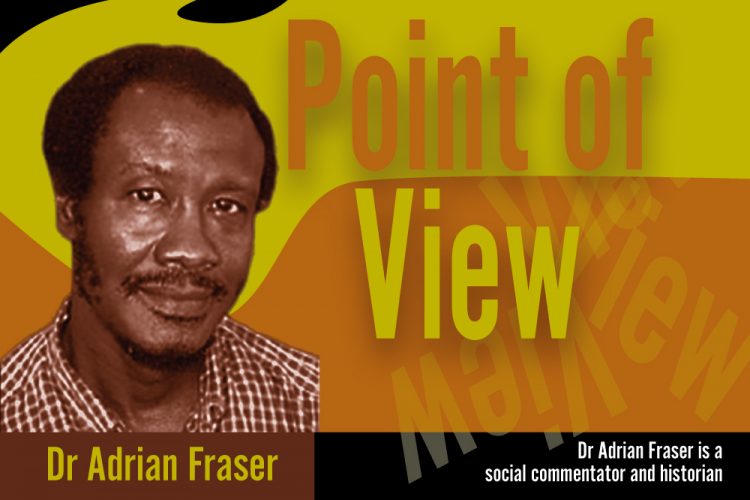A Time for the Indian community to Celebrate and Reflect!

Last Wednesday, July first, the Indian community continued their annual celebrations and reflection about that day 161 years ago when their ancestors arrived in a new land about which they knew little. Really it should be a national occasion because they are now fully integrated into the Vincentian community. They have over the years made their contribution to the development of SVG. Significantly at our first elections under Adult Suffrage, one of their members was elected to the Legislative Council as part of the “Eight Army of Liberation” team. He, Evans Morgan, died a few months ago. Like the indigenous Garifuna and Kalinago peoples they have been able to set aside a day to reflect, commemorate and pay homage to their ancestors. Unfortunately, the same cannot be said about the majority of Vincentians, descendants of persons kidnapped, bought and brought from Africa. We observe Emancipation Day but that is only part of our story. In fact, when we celebrated the 200th anniversary of the abolition of the slave trade we gave the honour and glory to Wilberforce and the humanitarians ‘so-called’ and not the people who struggled and resisted and made that day possible. The Slavery legacy lives on ,so we need to understand the nature and full impact on our country. I have always said that in the history of the English-speaking Caribbean SVG has been treated as a footnote, but that there is much that is unique about us, having perhaps the shortest period of slavery and being graced with a narrative about slavery by Ashton Warner, a slave on the Pembroke estate.
But the focus here is on the Indians who first arrived on June 1, landed at Edinboro and were housed briefly at the Commissariat building there before being sent to the estates to which they were assigned. The ship, “Travaucore”, arrived after a passage of 92 days from Madras, India. On board were 260 immigrants- 160 men, 62 women, 34 children under 10 and 4 infants under 1 year. The Lieutenant Governor Musgrave informed that there were no deaths on board but two births and five persons who were sick but had no need to be hospitalised. The question that has to be asked is what necessitated their voyage to SVG.
They arrived at a difficult time in the colony, 23 years after emancipation when the planters and freed Africans were trying to explore the boundaries of what was supposed to be a new society. They had different and contending visions. The planters hoped to retain the newly freed workers on their estates by limiting any alternative options they might have, like the availability of land and controlling the wages they were prepared to offer. The newly freed facing limited alternatives were prepared for a time to continue to work on the estates but only when working conditions and wages were satisfactory to them. Tensions began to build and the planters with the colonial authorities saw immigration as their best option, hoping to find them from any source. The Portuguese arrived in 1845 and significantly five months before the arrival of the Indians, 119 so-called liberated Africans arrived from St. Helena, a British colony in the South Atlantic ocean. The British had since 1807/8 abolished their slave trade and sought to seize slaves on ships of countries still participating in the trade. These were of course taken to their colonies and the planters benefited.
The first set of Indians who arrived in 1861 and 1862 found themselves trapped amidst tensions that had metamorphosed into major riots from September to October 1862. The freed people were aware that the Indians were brought in to provide competition for them and resented the fact that they did not participate in the riots about which they knew very little. The East Indians who were brought in under contracts had major issues since the terms of their contracts were hardly ever fulfilled. Despite the early challenges and tensions the Indians through the churches and schools went through a process of creolisation, so much so that in 1882 Lieutenant Governor Gore could remark that Indians and creole labourers were living in homes in yards in little villages. He said that they appeared to like it “on account of the Breadfruit trees under the shelter of which those little villages have sprung up as well as the sake of each other’s company.” There would have been some bonding even on the voyages for there were occasions, as with the Castle Howard arriving in April 1862 , that liberated Africans were included among the Indians. The 1911 census noted that the Indian population had become quite naturalised, with most of them then having been born in the colony. Many would have accepted the offer of return passages to India, and some were able to move to Trinidad and then British Guiana. The records indicate the number of Indian immigrants arriving in SVG as 2,472 with 1,050 having returned to India.
The Indian experience was not that of the enslaved Africans, but their early days were difficult, miserable and challenging ones. Some of this is captured in , Lenroy Thomas’ book, STORIES FROM OUR INDIAN ELDERS, the author using oral history to tell their stories as was handed down over the years. Today their story is a Vincentian story. In fact, theirs has always been part of a Vincentian story, a story of different peoples arriving at different times to build this country of ours, whose “faith,” hopefully “will see us through.”
Dr Adrian Fraser is a social commentator and historian









